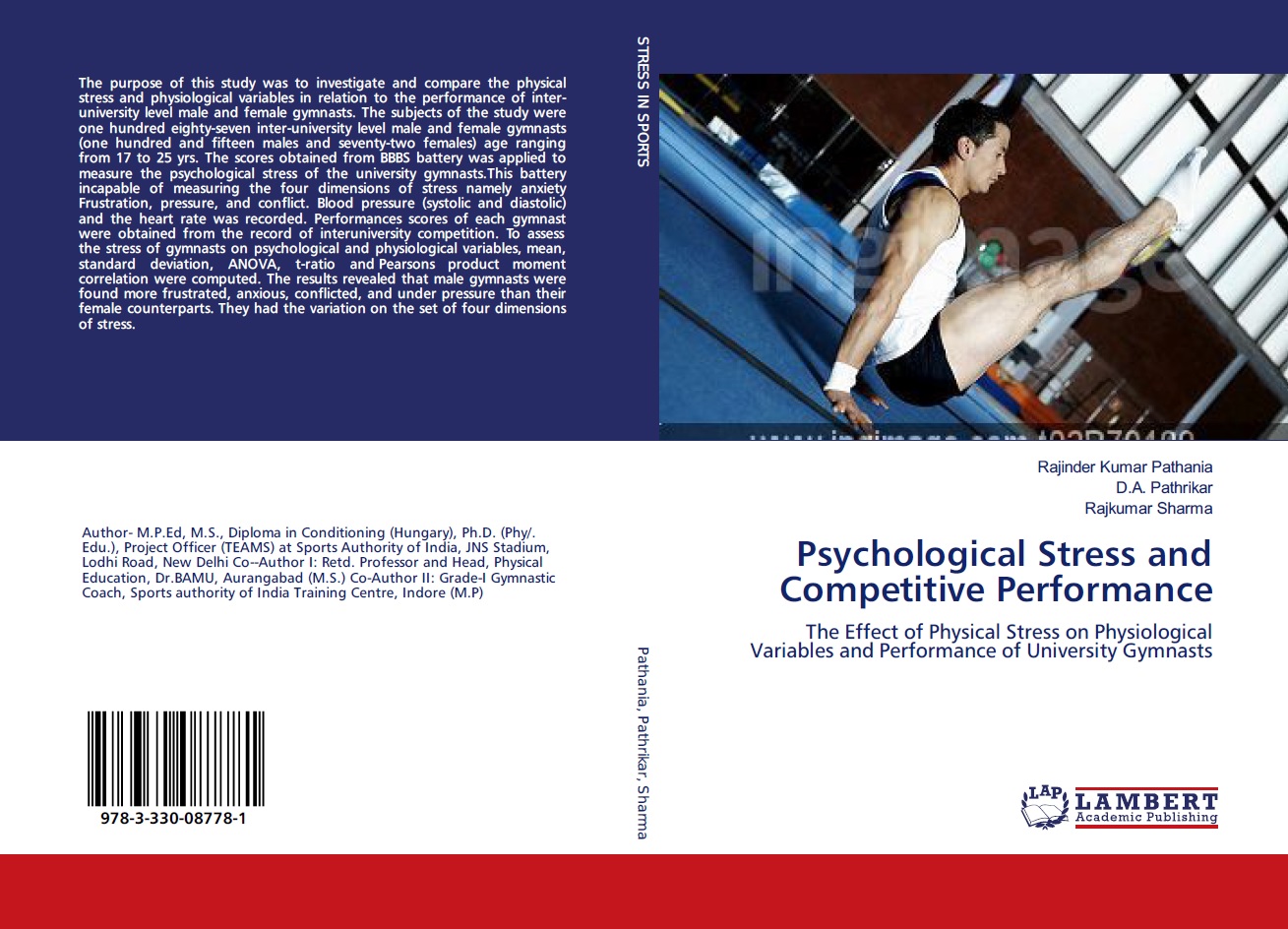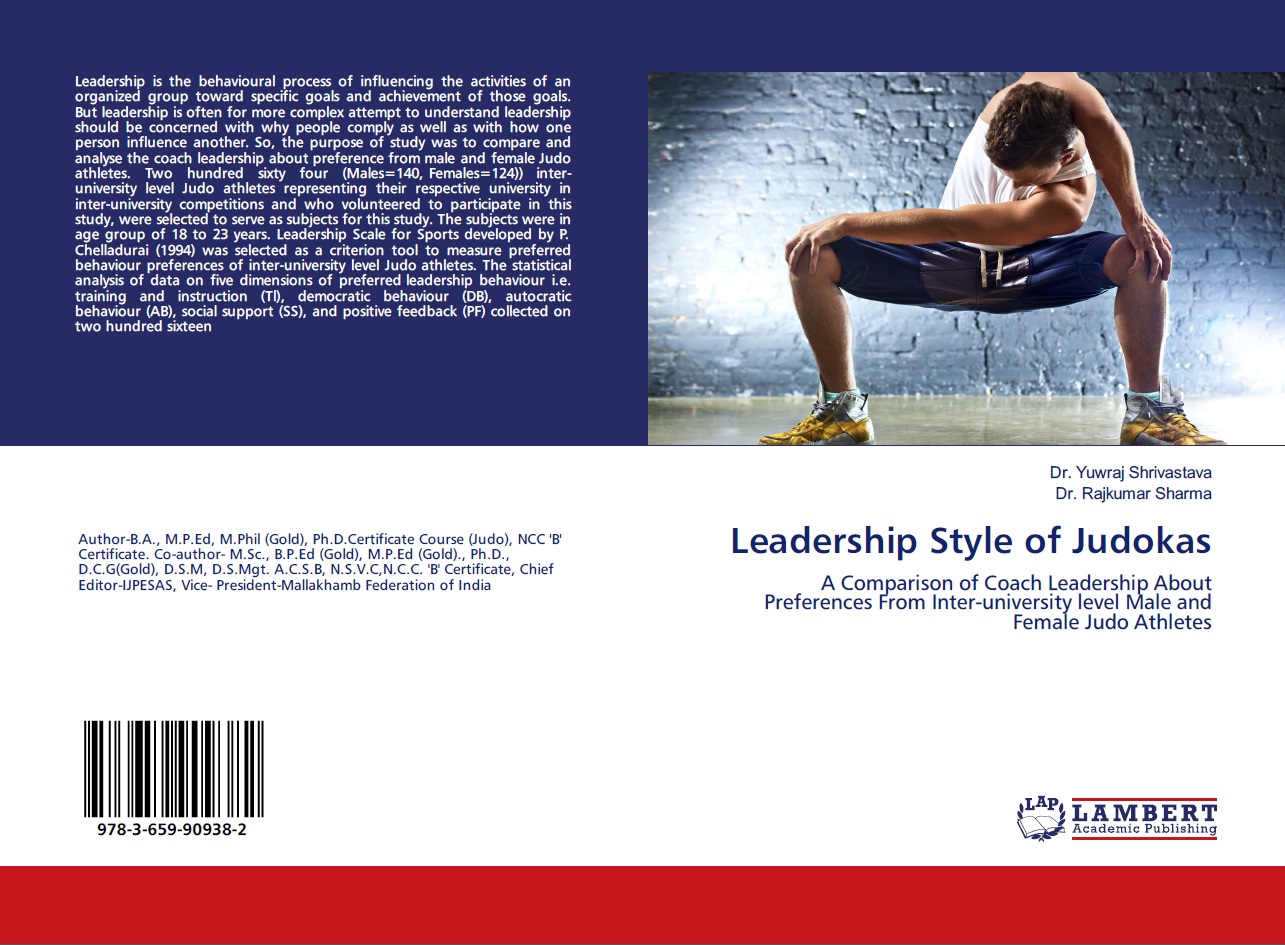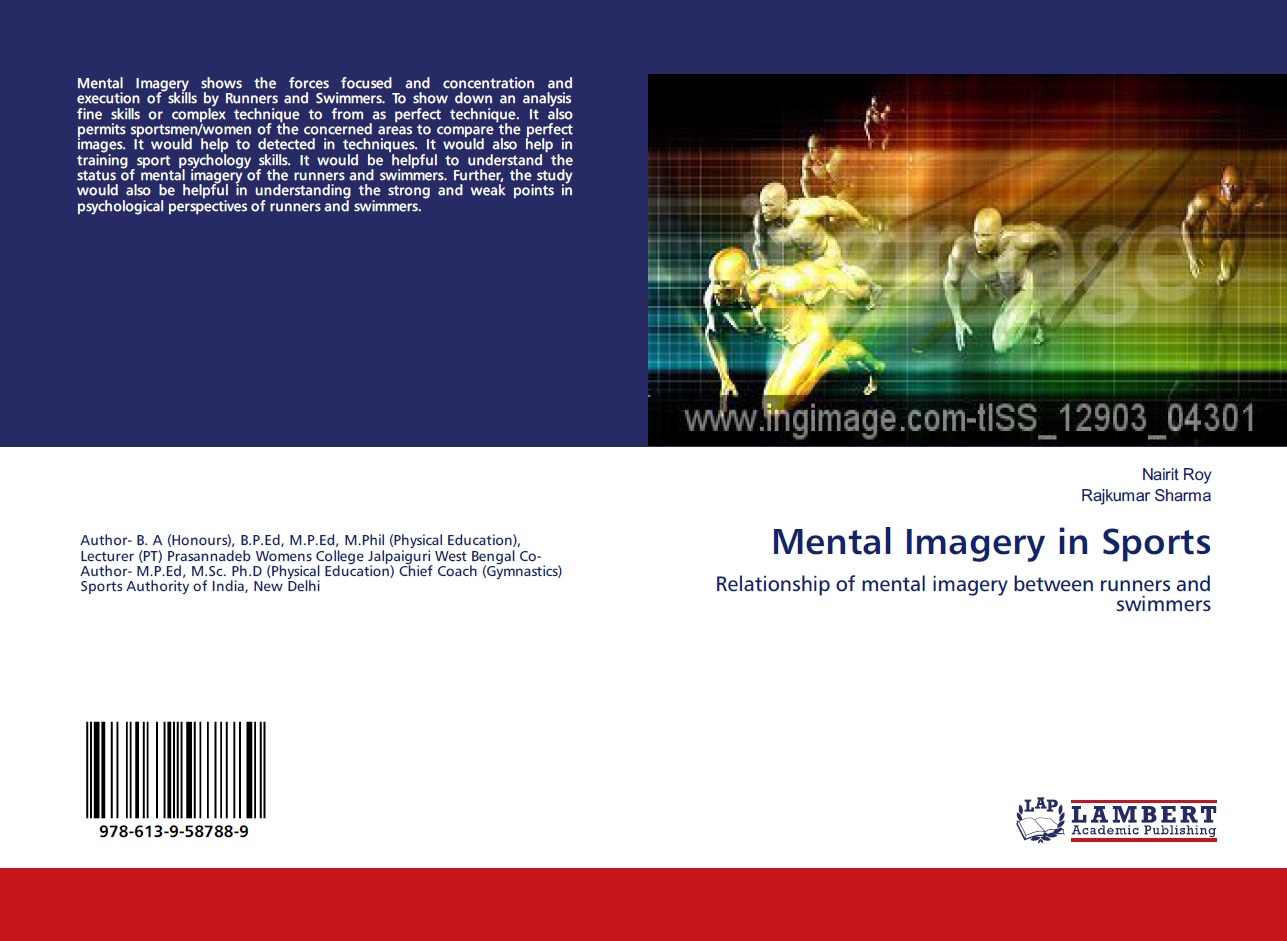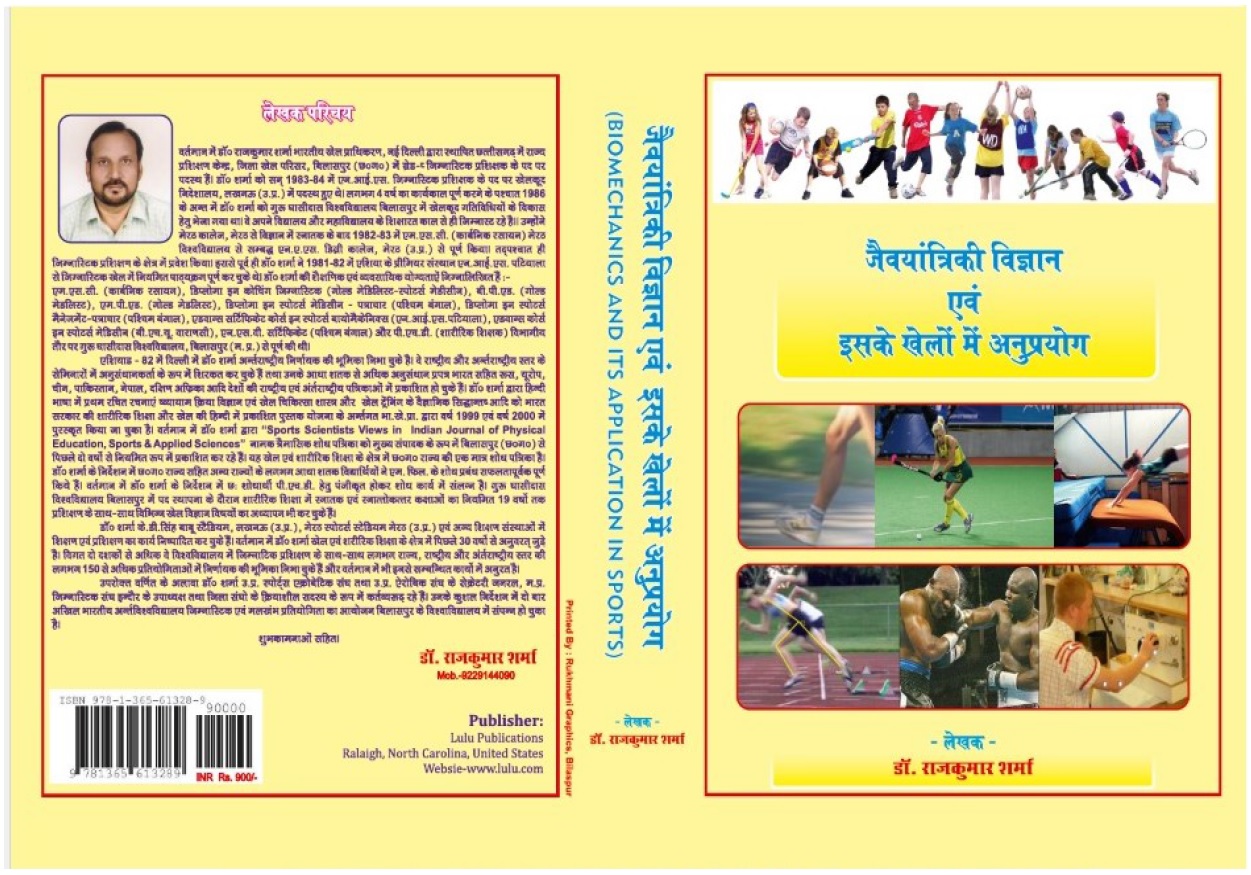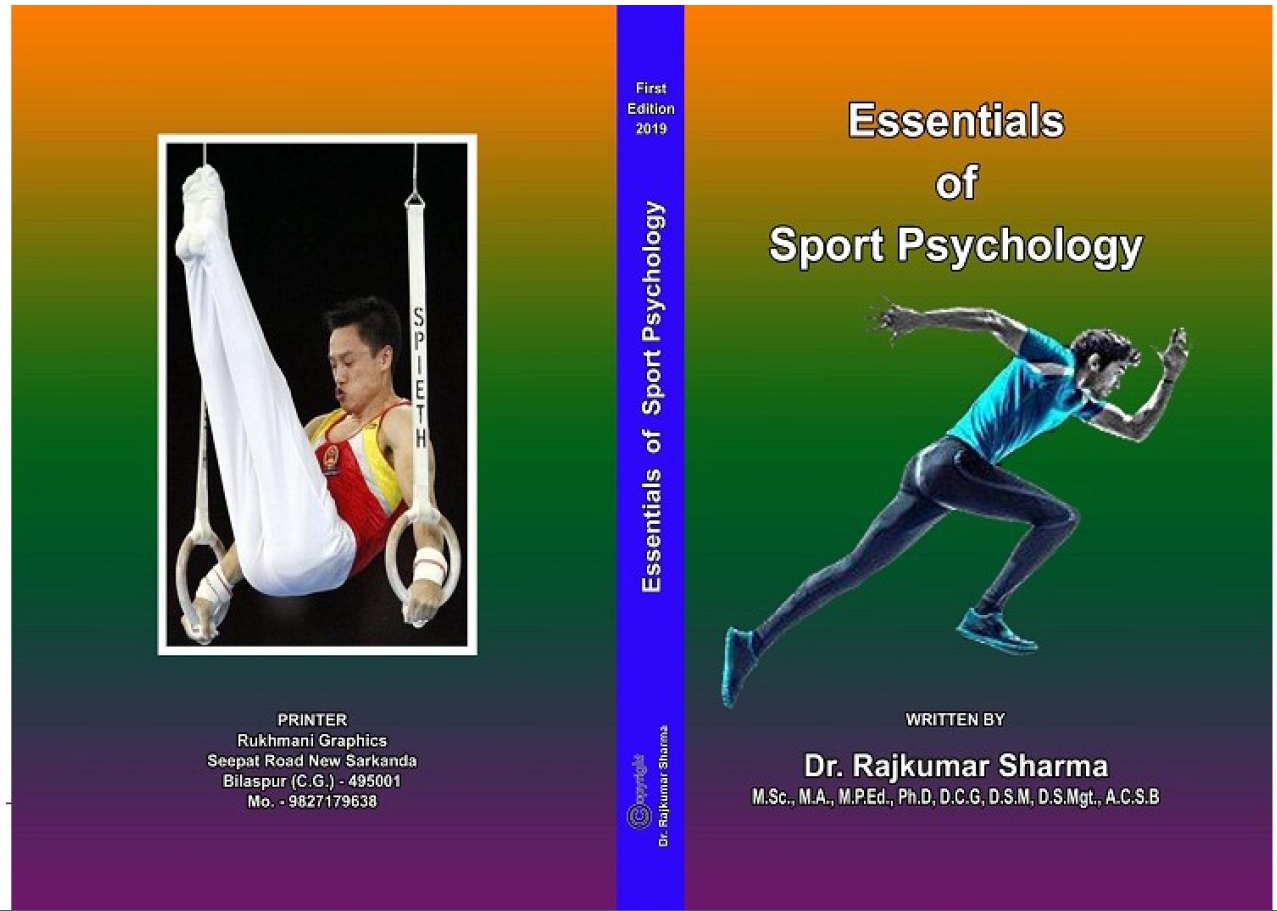| S.No. | Total View Count | Title of Manuscript | Page No | Download/ PDF |
|---|---|---|---|---|
| 1 | THEORETICAL CONCEPT OF ANXIETY AND SPORT PERFORMANCE: REVIEW BASED CONCEPT Author: Dr. Rajkumar Sharma | 31-41 |  4 4 |
Article info
doi no.: 05-2016-44975451; DOI Link :: https://doi-ds.org/doilink/08.2023-48383141/IJPESAS/V12/N4/OCT/2022/A4
AFFILIATIONS:
1 Former Chief National Gymnastic Coach, SAI Training Centre Indore (M.P.) established by SAI, Jawaharlal Nehru Stadium, New Delhi
The purpose of this study was to investigates the correlation between performance and anxiety in sports. This study also includes a discussion the theoretical concept of anxiety and way of relationship with sports performance.. This concept of research conducted on the correlation between performance and anxiety in sports is discussed. The anxiety has an effect of anxiety on performance of athletes during a competition. A review of related literature of cognitive-behavioral treatments, is used for reduction of anxiety and increase the sports performance in sports. The are achieved by An individual in sports can achieve the top performance through psychological states i.e. depression, anger, fatigue, confusion high levels of vigor and low level of tension. It is therefore necessary to consider all aspects of psychological functioning of an athlete if sport psychologies are to have a maximum impact.
During the symptoms like short of breath, sweating, shaking or high heart beat rate, an athlete can lose his concentration in his task in competition. Athlete can loose his confidence He did not able to complete his task or for the success. During this moment, he will have to understand that how anxiety is effecting his performance and what is relationship between them. Anxiety can effect his performance in many ways i.e. physiological, cognitive and behavioural ways. When the body of an athletes in tension and under high blood pressure, then he can not coordinate with his action of skill. In this situation movements may be jerky which will effect the performance in negative way.
Keywords: Anxiety, stress, tension, sport performance, psychological factors.
References
Bejek, K., & Hagtvet, K. A. (1996). The content of pre-competitive state anxiety in top and lower level of female gymnasts. Anxiety, Stress and Coping: An International Journal, 9, 19-31
Broadhurst, P. L. (1957). Emotionality and the Yerkes-Dodson law. Journal of Experimental Psychology, 54, 345-352.
Burton, D. (1988). Do anxious swimmers swim slower? Reexamining the elusive anxiety-performance relationship. Journal of Sport Psychology, 10, 45-61.
Butler (1996). Sport Psychology In Action. Butterworth-Heinemann: Oxford, England.
Fazey, J. A., & Hardy, L. (1988). The Inverted-U Hypotheses: A Catastrophe for Sport Psychology. British Association of Sport Sciences Monograph No. 1 National Coaching Foundation, Leeds.
Gould, D., Ecklund, R. C., & Jackson, S. A. (1993). Coping strategies used by U.S. Olympic Wrestlers. Research Quarterly for Exercise and Sport, 64, 83-93.
Gould, D. Petchlikoff, L., & Weinberg, R. S. (1984). Antecedents of, temporal changes in, and relationships between the CSAI-2 sub components. Journal of Sport Psychology, 6, 289-304.
Hanin, Y. L. (1980) A study of anxiety in sport. In W. F. Straub (Ed.), Sport Psychology: An Analysis of Athletic Behavior, Movement Publications, Ithaca, NY 236-249.
Hardy, L. (1990). A catastrophe model of anxiety and performance. In J. T. Jones & L. Hardy (Eds.), Stress and performance in Sport, Wiley, Chichester, 81-106.
Hardy, L. (1996) A test of catastrophe models of anxiety and sports performance against multidimensional anxiety theory models using the method of dynamic differences. Anxiety, Stress and Coping: An International Journal, 9, 69-86.
Hardy, L., Jones, G., & Gould, D. (1996). Understanding Psychological Preparation for Sport: Theory and Practice of Elite Performers. Wiley, Chichester.
Hebb, D. O. (1955). Drives and the CNS (Conceptual Nervous System). Psychological Review, 62, 243-254.
Holm, J. E., Beckwith, B.E., Ehde, D. M., & Tinius, T. P. (1996). Cognitive-behavioral interventions for improving performance in competitive athletes: A controlled treatment outcome study. International Journal of Sport Psychology, 27, 463-475.
Jones, G. (1990) A cognitive perspective on the process underlying the relationship between stress and performance in sport. In G. Jones & L. Hardy (Eds.), Stress and Performance in Sport, Wiley, Chichester, 17-42.
Jones, G., Hanton, S., & Swain, A. B. J. (1994). Intensity and interpretation of anxiety symptoms in elite and non-elite sports performers. Personal Individual Differences, 17, 657-663.
Jones, G., & Hardy, L. (1990). Stress in sport: Experiences of some elite performers. In G. Jones and L. Hardy (Eds.), Stress and Performance in Sport, Wiley, Chichester, 247-277.
Jones, G., Swain, A. B. J., & Cale, A. (1990). Antecedents of multidimensional competitive state anxiety and self confidence in elite intercollegiate middle distance runners, The Sport Psychologist, 4, 107-118.
Jones, G., Swain, A. B. J., & Cale, A. (1991). Gender differences in pre competition temporal patterning and antecedents of anxiety and self confidence, Journal of Sport and Exercise Psychology, 13, 1-15.
Jones, G., Swain, A. B. J., & Hardy, L. (1993). Intensity and direction dimensions of competitive state anxiety and relationships with performance. Journal of Sport Sciences, 11, 525-532.
Kirby, R. J., & Liu, J. (1999) Precompetition anxiety in Chinese athletes. Perceptual and Motor Skills. 88, 297-303
Krane, V., Joyce, D., & Rafeld, J. (1994). Competitive anxiety, situation criticality, and softball performance. Sport Psychologist, 8, 58-72.
Lohr, B. A. & Scogin,F. (1998) Effects of self-administered visuo-motor behavioral rehearsal on sport performance of collegiate athletes. Journal of Sport Behavior, 21, 206-218.
Lowe, R. & McGrath, J. E. (1971). Stress arousal and performance: Some findings calling for a new theory. Project Report, AF 1161-67, AFOSR.
MacLeod, C. (1990). Mood disorders and cognition. In M. W. Eysenck (Ed.), Cognitive Psychology: An International Review. Wiley, Chichester.
Martens, R., Burton, D., Vealey, R. S., Bump, L. A., and Smith, D. E. (1990). Development and Validation of the Competitive State Anxiety Inventory - 2. In R. Martens, R. S. Vealey & D. Burton (Eds.), Competitive Anxiety in Sport, Human Kinetics, Champaign, IL, 117-190.
Martin, K. A., & Hall, C. R. (1997). Situational and intrapersonal moderators of sport competition state anxiety. Journal of Sport Behavior, 20, 435-446.
Maynard, I. W., & Cotton, P. C. (1993). An investigation of two stress-management techniques in a field setting. Sport Psychologist, 7, 375-387.
McNair, D. M., Lorr, M., & Droppelman, L. F. (1971). Profile of Mood States Manual, Educational and Industrial Testing Services, San Diego, CA.
Meyers, A. W., Scheleser, R., & Okwumabua, T. M. (1982). A cognitive-behavioral intervention for improving basketball performance. Research Quarterly for Exercise and Sport, 53, 344-347.
Morgan, W. P. (1985). Affective Beneficence of vigorous physical activity. Medicine and Science in Sport and Exercise, 17, 94-100.
Orlick, T. (1986). Psyching for Sports. Human Kinetics, Champaign, IL.
Orlick, T., & Partington, J. (1988). Mental links to excellence. The Sport Psychologist, 2, 105-130.
Savoy, C. (1997). Two individualized mental training programs for a team sport. International Journal of Sport Psychology, 28, 259-270.
Savoy, C., & Beitel, P. (1997). The relative effect of a group and group/individualized program on state anxiety and state self-confidence. Journal of Sport Behavior, 20, 364-376.
Simon, , J. A., & Martens, R. (1977). S.C.A.T. as a predictor of A-states in varying competitive situations. In D. M. Landers & R. W. Christina (Eds.), Psychology of Motor Behaviour and Sport (Vol. 2), Human Kinetics, Champaign, IL, 146-156.
Smith, R. E., Smoll, F. L., & Ptacek, J. T. (1990). Measurements and correlates of sport-specific cognitive and somatic trait anxiety. Anxiety Research, 2, 263-280.
Spielberger, C. S. (1966). Theory and research on anxiety. In C. S. Spielberger (Ed.), Anxiety and Behaviour, Academic Press, New York, 3-20.
Swain, A. B. J., & Jones, G. (1996). Explaining performance variance,: The relative contributions of intensity and direction dimensions of competitive state anxiety. Anxiety, Stress, and Coping: An International Journal, 9, 1-18.
Terry, P. (1995). The efficacy of mood state profiling with elite performers: A review and synthesis, The Sport Psychologist, 9, 309-324.
Terry, P., Coakley, L., & Karageorghis, C. (1995). Effects of intervention upon pre-competition state anxiety in elite junior tennis players: The relevance of the matching hypothesis. Perceptual and Motor Skills, 81, 287-296.
Thuot, S. M., Kavouras, S. A., & Kenefick, R. W. (1998). Effect of perceived ability, game location, and state anxiety on basketball performance. Journal of Sport Behavior, 21, 311-321
Vadocz, E. A., Hall, C. R., & Moritz, S. E. (1997). The relationship between competitive anxiety and imagery use. Journal of Applied Sport Psychology, 9, 241-253.
Wiggins, M. S., & Brustad, R. J. (1996). Perception of anxiety and expectations of performance. Perceptual and Motor Skills, 83, 1071-1074.
 admin@sportscientistsviews.com
admin@sportscientistsviews.com

